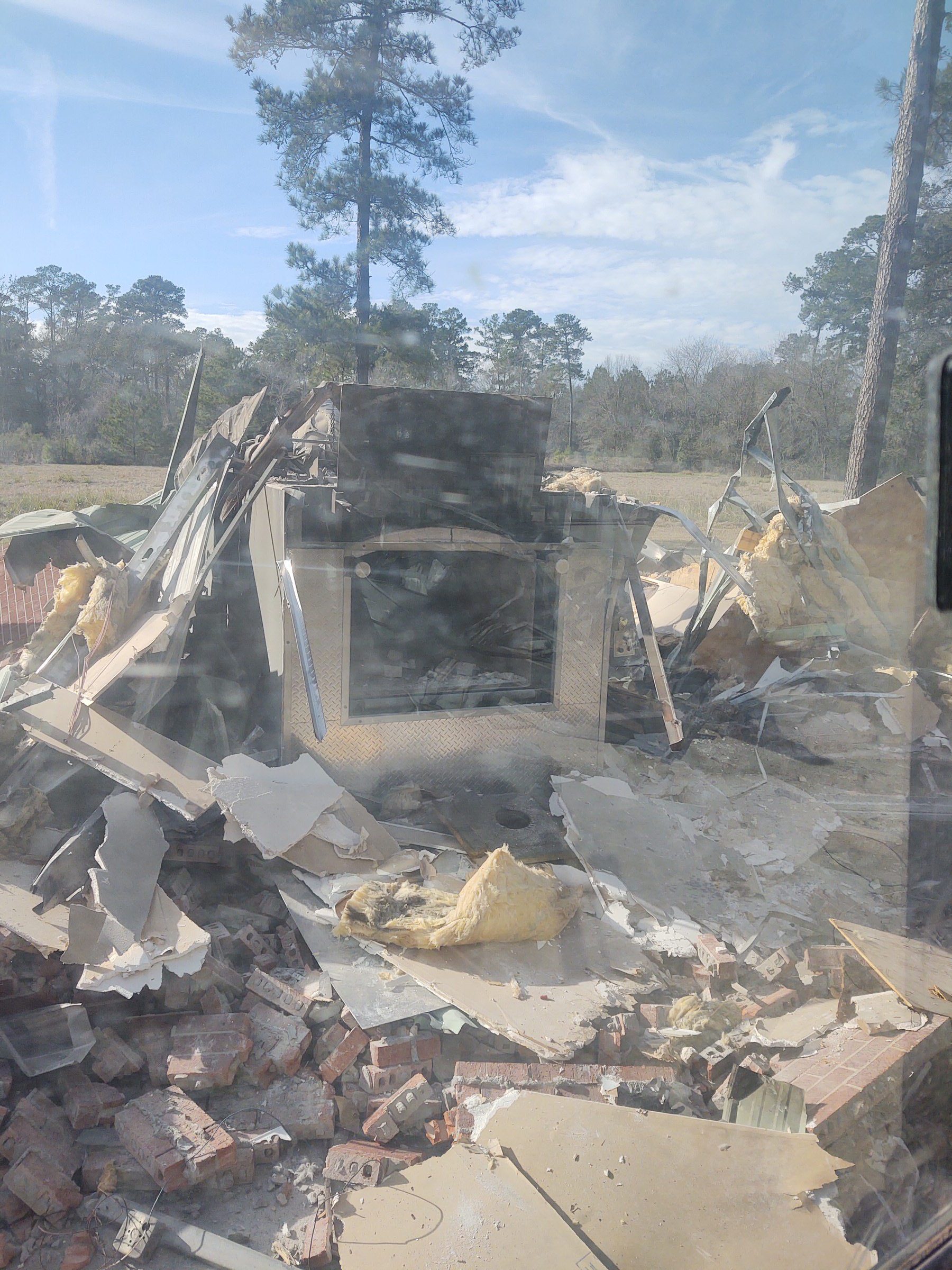
OMAHA — A busload of budding developers snaked through some of the city’s oldest neighborhoods this week, guided by an urban planner who pointed out abandoned lots freshly prepared for new housing thanks to a state “shovel-ready” grant.

The tour group went on to participate in a first-of-its-kind conference aimed at preparing emerging developers, particularly those with ties to North and South Omaha, for what it takes to transform such infill properties.
The two-day Reignite 2 Unite symposium, organized by Omaha’s Municipal Land Bank and the nonprofit Spark, came on the heels of a separate unusual undertaking. In that situation, the City of Omaha sold 50 vacant lots it has been maintaining — some for as low as $1. The developer buyers in turn have a deadline to build on the land.
Described as unprecedented, the efforts are aligned in that they’re expected to produce what city and state officials say is a precious commodity: affordable housing.
Mayor, DED director
Both Nebraska’s economic development director, K.C. Belitz, and Omaha Mayor Jean Stothert spoke at the Reignite conference — sharing perspectives and progress on what local and state officials have called a crisis level shortage of workforce housing.

In Omaha alone, Stothert said, more than 55,000 households spend at least 30% of their income on housing, rendering them “cost-burdened.”
Among the city’s biggest strides on affordable housing, she said, is a partnership formed two years ago with Front Porch Investments that will lead to about 1,500 units, some newly constructed and others renovated. The future housing was spurred by a $20 million federal grant the city directed to Front Porch, which secured another $20 million in philanthropic matching funds.
Stothert also highlighted Tuesday’s approved sale of the 50 undeveloped North Omaha lots priced as low as $1, saying they offer a chance for the 10 developer groups involved to build new single or multi-unit housing projects.
“There will be more opportunities,” the mayor said, “to buy city lots in the future for a low amount of money.”

Innovation
Belitz cited as an example of innovation Ashland-based DekmX Homes, which offers a nontraditional technique that includes transporting precast walls from a Lincoln production plant to the construction site. He said their model accelerates a build and reduces costs.

To be sure, Belitz said, Nebraska is not idle. Last year, he said, more people worked in construction trades across the state than at any time in history. “We just aren’t building fast enough.”
He said Nebraska needs “tens of thousands of new units” of all housing sizes. “Until we solve that, it will be very difficult indeed to make real progress on the opportunity we have to bring more people to Nebraska.”
A large part of conference-goers were entrepreneurs seeking to ramp up housing development in the community in which they live.
Kyle Bland, a North Omaha resident who owns Unique Cuts barber shop, said he already owns an existing fourplex and wanted to better understand how to develop a project from the ground up.
“I have visions of what the neighborhood should look like,” said Bland, 36. “I know I can make a change.”

A co-founder of Luna Construx, Sonia Macias, has rehabbed and flipped numerous houses and now aims to develop land for a multifamily housing venture in South Omaha.
She is a recent graduate of the more intensive Spark Developer Academy, which offers a deeper dive into real estate development. At the conference she sought to reconnect with bankers, architects and other partners helpful in assembling real estate deals.
“My goal is to improve housing and our neighborhoods, and leave Omaha better for the next generation,” said Macias.
$1.25 million to get shovel-ready
She and Bland are among those interested in bidding on “shovel-ready” lots that organizers showcased in conference materials and during the bus tour.
A $1.25 million state grant to the Land Bank will be used to prepare for residential development at least 20 lots in its roughly 300-parcel inventory. The award came from federal COVID-19 funds administered by the Nebraska Department of Economic Development’s Qualified Census Tract Affordable Housing Program, which are to be focused in low-income areas of North and South Omaha disproportionately impacted by the pandemic.
All selected project sites are in former “redlined” communities that have faced ongoing negative consequences of past housing discrimination practices, said Jeff Spiehs of Lamp Rynearson engineering firm, which is helping with site cleanup and development.

To date, five pilot sites have been cleaned up, barriers have been removed and they are ready for building, said Spiehs, who led the bus tour.
Unlike the properties recently sold by the City of Omaha for as low as $1, the cost of the Land Bank’s first wave of transformed lots range from $14,200 to $33,900. The higher-priced site is a larger area that could hold a townhome-style project. (The Land Bank, created by the Nebraska Legislature, follows a different set of guidelines than the city).
Bidding is to begin soon on that initial phase.
Spark an interest
Land Bank executive director Leslie Smith expects the lot transformation project to be replicated in the future with other funding.

Community benefits are expected beyond the initial affordable housing that’s produced. She said a Memphis project upon which the Omaha project was modeled saw surrounding real estate values increase by up to 15%.
Smith said the Reignite symposium was a way to whet appetites and provide more resources, financing and other tips to real estate-minded community members interested in building up inner city neighborhoods.
Organizers hope the event drives more affordable housing development.
Said Smith: “People walked away understanding that what before seemed inaccessible and mysterious is attainable.”
Emerging developer winds down first big project
Phillip McClain watched the flurry of activity at his first ground-up construction project. He said he was pleased by the accomplishment, and already is thinking about his next venture.
“It feels good to see it come to life,” he said of the nine-house development that broke ground early this year and already is 80% complete. “The area’s growing. There’s more value in the neighborhood. It’s looking sweet.”

McClain, a graduate of the Spark Developer Academy, was among speakers at the Reignite conference this week, offering fellow emerging developers tips on what he has learned in the two years since.
He launched the Mensch Group company in 2022 and focused his sights on infusing a new housing style into a North Omaha pocket at 49th Street and Curtis Avenue.
This month he is poised to turn over keys to the new owners of two of the nine houses in the $3.2 million “Curtis Corner” project.
He expects work on the entire development to be wrapped up by summer’s end, with the average appraised value for each three-bedroom home at about $285,000.
Buyers will pay less than that, however. Designed for workforce families making 60% to 120% of the area median income, McClain’s plan, according to city records, is to sell the homes at about $225,000.
Developer costs are defrayed with the help of City of Omaha-approved tax-increment financing of $551,000.
And as long as the homes are restricted for the designated income-qualified population, the buyer can access gap funding from nonprofit sources such as the local Spark Capital program to bridge the cost between construction and sale price. McCain said his buyers are assisted also by Omaha Habitat for Humanity, which offers homebuyer assistance.
Sudbeck Homes is building the houses. McClain said a lasting benefit of the multi-week developer academy is making contacts, from general contractors to private engineers, bankers and city planning officials.
As Curtis Corner comes to fruition, McClain, who won a Spark “development of the year award” for 2024, said he is exploring Omaha Land Bank properties for a future venture he expects might be in North Omaha.
“It’s still a good time to give back and make sure we take care of the area,” he said.
SDGs, Targets, and Indicators Analysis
1. Which SDGs are addressed or connected to the issues highlighted in the article?
- SDG 1: No Poverty
- SDG 8: Decent Work and Economic Growth
- SDG 11: Sustainable Cities and Communities
- SDG 17: Partnerships for the Goals
The issues highlighted in the article are related to poverty, affordable housing, economic growth, and sustainable urban development, which align with the above-mentioned SDGs.
2. What specific targets under those SDGs can be identified based on the article’s content?
- Target 1.4: By 2030, ensure that all men and women, in particular, the poor and the vulnerable, have equal rights to economic resources, as well as access to basic services, ownership, and control over land and other forms of property.
- Target 8.3: Promote development-oriented policies that support productive activities, decent job creation, entrepreneurship, creativity, and innovation.
- Target 11.1: By 2030, ensure access for all to adequate, safe, and affordable housing and basic services and upgrade slums.
- Target 17.17: Encourage and promote effective public, public-private, and civil society partnerships, building on the experience and resourcing strategies of partnerships.
These targets are relevant to the article’s focus on providing affordable housing, promoting economic development and entrepreneurship, and fostering partnerships for sustainable urban development.
3. Are there any indicators mentioned or implied in the article that can be used to measure progress towards the identified targets?
- Indicator 1.4.2: Proportion of total adult population with secure tenure rights to land, with legally recognized documentation and who perceive their rights to land as secure, by sex and type of tenure.
- Indicator 8.3.1: Proportion of informal employment in non-agriculture employment, by sex.
- Indicator 11.1.1: Proportion of urban population living in slums, informal settlements, or inadequate housing.
- Indicator 17.17.1: Amount of United States dollars committed to public-private and civil society partnerships.
These indicators can be used to measure progress towards the identified targets, such as the proportion of the population with secure land tenure rights, the proportion of informal employment, the proportion of the urban population living in inadequate housing, and the amount of funding committed to partnerships.
Table: SDGs, Targets, and Indicators
| SDGs | Targets | Indicators |
|---|---|---|
| SDG 1: No Poverty | Target 1.4: By 2030, ensure that all men and women, in particular, the poor and the vulnerable, have equal rights to economic resources, as well as access to basic services, ownership, and control over land and other forms of property. | Indicator 1.4.2: Proportion of total adult population with secure tenure rights to land, with legally recognized documentation and who perceive their rights to land as secure, by sex and type of tenure. |
| SDG 8: Decent Work and Economic Growth | Target 8.3: Promote development-oriented policies that support productive activities, decent job creation, entrepreneurship, creativity, and innovation. | Indicator 8.3.1: Proportion of informal employment in non-agriculture employment, by sex. |
| SDG 11: Sustainable Cities and Communities | Target 11.1: By 2030, ensure access for all to adequate, safe, and affordable housing and basic services and upgrade slums. | Indicator 11.1.1: Proportion of urban population living in slums, informal settlements, or inadequate housing. |
| SDG 17: Partnerships for the Goals | Target 17.17: Encourage and promote effective public, public-private, and civil society partnerships, building on the experience and resourcing strategies of partnerships. | Indicator 17.17.1: Amount of United States dollars committed to public-private and civil society partnerships. |
Source: nebraskaexaminer.com







